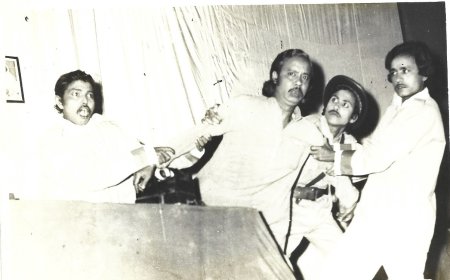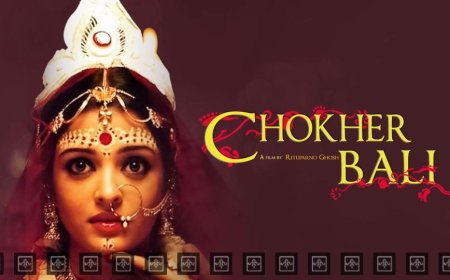Pulok Gogoi : Leaving An Indelible Impression
Film critic Prantik Deka writes, "Pulok Gogoi who had just returned from the USA after enjoying overwhelming success following the exhibition of his paintings, held at the reputed Washington Hodges Gallery with the help of the Art Society of the International Monetary Fund, evinced a deep interest in filmmaking. "
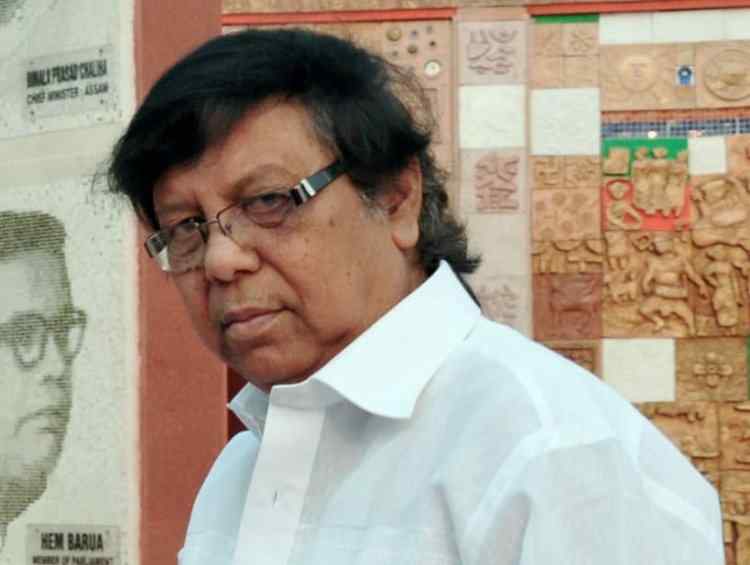
The seventies marked a paradigm shift with the rise of the new wave of parallel or realistic cinema with its own distinctive approach to form and style. The movement spread its wings to other parts of the country as well, including Assam, which had its own new wave movement. It was against such a backdrop of Neo-realism, and the socio-political climate of the times, in addition to the growth of the film society movement, that a bunch of Assamese filmmakers hell-bent on creating and promoting their brand of realism in their own styles, emerged into the scene. A series of realistic, experimental films with socially relevant themes, and with miniscule budgets, made their way into the theatres. It was during this time, in 1972, to be precise, that Pulok Gogoi (1938 - 2022), who had just returned from the USA after enjoying overwhelming success following the exhibition of his paintings, held at the reputed Washington Hodges Gallery with the help of the Art Society of the International Monetary Fund, evinced a deep interest in filmmaking. Gogoi had, in fact, sold 40 of his artworks at the exhibition, which fetched him a great deal of money. He had already established his reputation as a painter and political cartoonist then.
Actually, the bug of filmmaking took root much before though, after Gogoi met and worked as an assistant with the eminent art director A.A. Majid for sometime in Bombay in the late fifties. But, finally, in 1975, Gogoi made his foray as a filmmaker with the much experimental 'Khoj'. Based on his own story and script, the film, concerned with social discrimination against women, might have bewildered a lot of people at the time, but it was critically appreciated for its aesthetic and artistic presentation. The film's images, symbols and the evergreen songs like 'Chinaki Chinaki Mor Monor Manuh' and 'Jilmiliya Komal Bali' under the awe-inspiring music direction of Dr Bhupen Hazarika, have made it a cult favourite among film enthusiasts and discerning viewers. The movie was in essence a great learning curve for him in the craft of filmmaking.
The seriousness of 'Khoj' was replaced by the humourous and much-loved 'Srimati Mahimamoyee', which was immediately embraced by the public. Gogoi also recovered most of the losses he had incurred in his previous movie. Released in 1978, the film, based on a humorous short story of the same name by eminent writer Laxminath Phookan, centres around a miserly lady hailing from a lower middle-class family, whose illogical actions and decisions evoke laughter and amusement. Even though it's replete with humorous situations without the gross exaggeration of it, the film carries along a strong message, that of the social acceptance of a daughter born to an unwed mother. The music scored by the popular music director duo of Kula Barua and Atul Medhi, spawned evergreen songs that will remain an integral part of our lives like 'Duhatote Dichha Muk Phool', 'Jibane Bichare Ki', 'Neela Akaxore Rupuwali Pori', and 'Mukhkhoni Goi Mukha Hol Oi'.
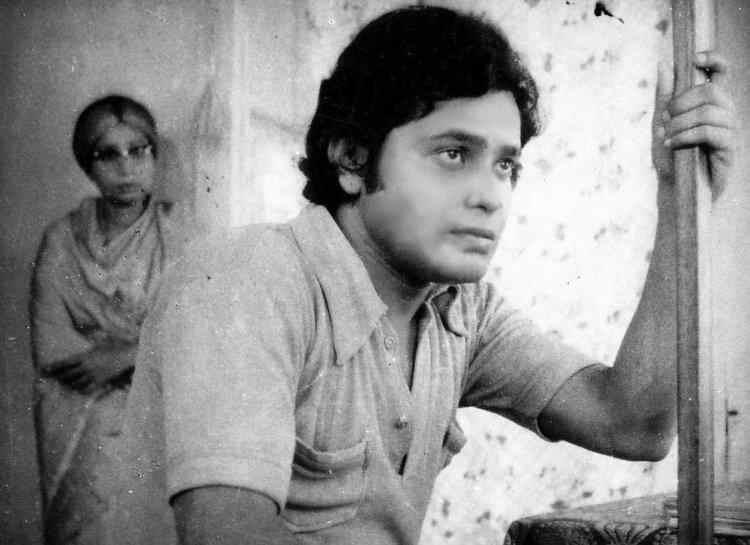
Image: Film still, Sadori
His next film, 'Sadori' released in 1982, makes a strong statement about the benefits of the agricultural sector with the aim of encouraging and integrating the youths into the agricultural workforce, and the value of being self-sufficient. The idea was to arrest the problem of unemployment in the State.
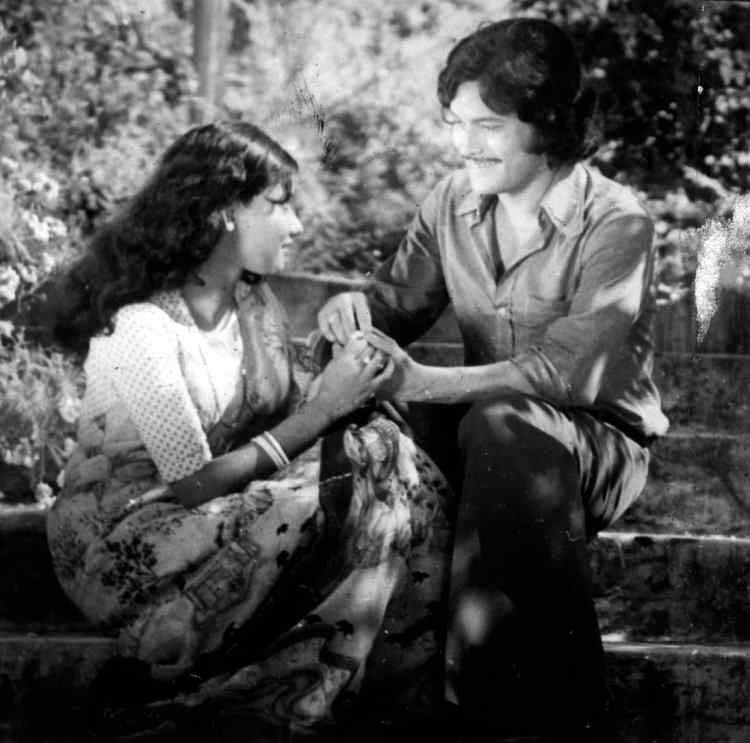
Image: Film still, Srimati Mahimamoyee
'Sendur', released in 1984, is about the battle waged by the upright villagers led by the high school headmaster Barua and his brother Rajiv against the nefarious elements and enemies of education. The film makes a point or two about the importance of rural development. The multi-starred, featuring among others Abdul Majid, Bidya Rao, Brajen Bora, Tapan Das and Dinesh Das, became a runaway hit at the box-office.
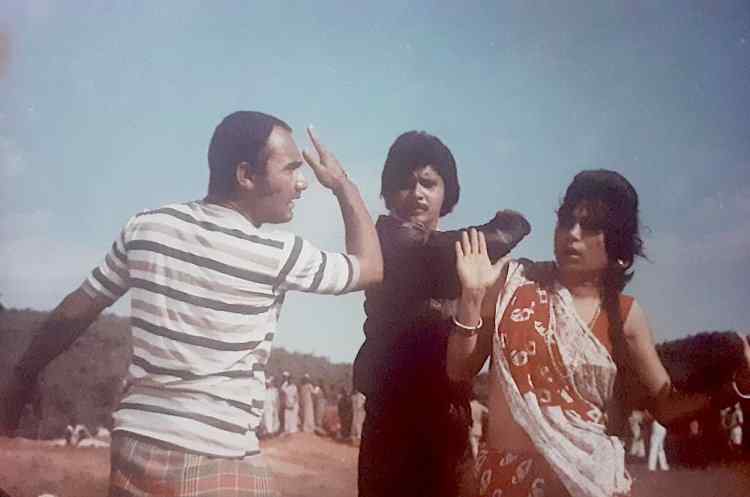
Image: film still Sendur
After 'Sendur', Pulok Gogoi made an out and out commercial entertainer in the form of 'Suruj' in 1985, which achieved huge commercial success and made Brajen Bora the undisputed action hero of Assamese cinema. 'Suruj' was Gogoi's genuine attempt to promote the commercial cinema movement of Assam.
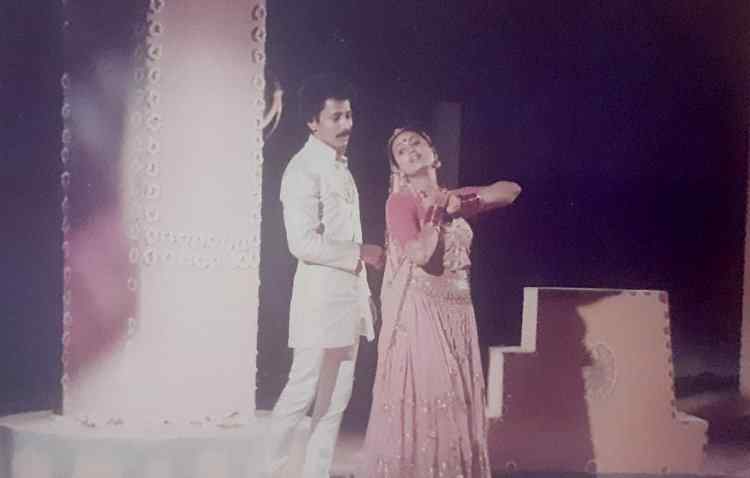
Image: Film still, Sendur
In 1993, Pulok Gogoi made the film 'Relor Alir Dubori Bon' from a short story by his role model and litterateur Sayed Abdul Malik. It was made as a challenge when the then centre director of Guwahati Doordarshan refused to fund the proposed project as Gogoi hasn't won any national level film award. Left with no choice, a determined Gogoi took a chance, producing the film himself at a budget of around 4 lakhs and 35 thousand rupees, and the film, to everyone's surprise, went on to win the Rajat Kamal Award for Best Assamese Film at the 40th National Film Awards. The film managed to collect around rupees 9 lakhs through awards, Doordarshan performances, etc. The film was a tragic portrayal of the exploitation of the poor, their endless suffering and helplessness, and the arrogant mentality of some power-hungry people in an increasingly rapacious and materialistic society. The popular music by Dashrath Das featured some beautiful tracks rendered by Bollywood singers Kumar Sanu and Kavita Krishnamurthy. The film featured Amitabh Gogoi, Dipika Sarma, Upakul Bordoloi, Reba Phukan among others. However, the film was never released at the theatres.
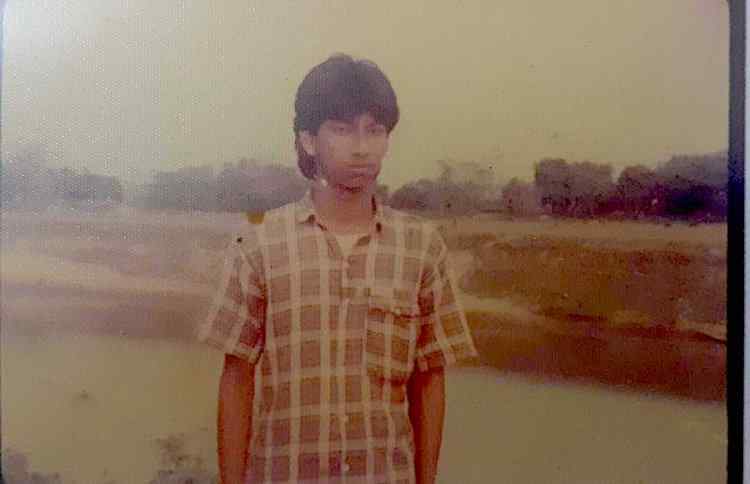
Image: Film still, Relor Alir Dubori Bon
Pulok Gogoi's next film was the musical love story 'Morom Nodir Gabharu Ghat', released in 1999. Starring Bidya Rao, Bikram Hazarika, Barnali Pujari, Niloy Gupta, among others, the beautiful music by noted music director Atul Medhi carried the film to be something truly memorable, with some very catchy and hummable melodies like 'Kou Kou Kou Buli Kuwa', 'Bukure Bhaxa Mor Buji Nopowane' and 'Mone Mone Mur' that appealed to the young generation. Pulok Gogoi's 2003 release 'Patnee' was based on the short story 'The Wife', written by the Myanmar-based poet-novelist Zawgyi. Though he is considered quite lazy and is the butt of jokes in the village, Katiram possesses a melodious voice. People listen to him intently when he sings naam ghosha-pad in naamghar. As the village Namghariya couldn't carry out his duties any longer as he's getting old, the job was entrusted upon Katiram. Katiram's life took a new turn upon assuming his new role, but to his wife's dismay, he seems to be grossly neglecting his family responsibilities. His wife Maadhon is having a very difficult time living on her own, selling vegetables in the market, cooking, taking care of the children, etc. One of her cousins hits upon a plan to bring him back. Finally, Katiram realises his mistake and returns home while handing over the responsibilities to his deputy - a thief turned devotee. The audiences were really impressed with the story and treatment, and found themselves captivated by the simple, relatable characters, the serene village life, the lush, green paddy fields and of course, the incredible music scored by Atul Medhi. The film featured some very beautiful songs that are remembered to this day. The leading roles are competently played by Jayanta Bhagawati, Pakiza Begum, Bikram Hazarika and Geetawali Rajkumari. Pulok Gogoi's film 'Mumtaz', released in 2013, turned out to be his swan song as a film director. He had a few films in the works, but never saw the light of day. Based on the well-known story 'Kathfula' by Assam's literary doyen Syed Abdul Malik, the film glorifies human bondage, and the various problems faced by women in the male-dominated contemporary society. The story's female protagonist Bedana, a wilful, independent and free-spirited woman, is considered as one of the most wonderful flowers in the literary garden of Syed Abdul Malik. The film fetched Pulak Gogoi the prestigious Filmfare Award (East) for Best Director in 2014. 'Mumtaz' is Pulok Gogoi's second film based on a short story by Malik after 'Relor Alir Dubori Bon'. He has also made several other serials and telefilms based on Malik's short stories.
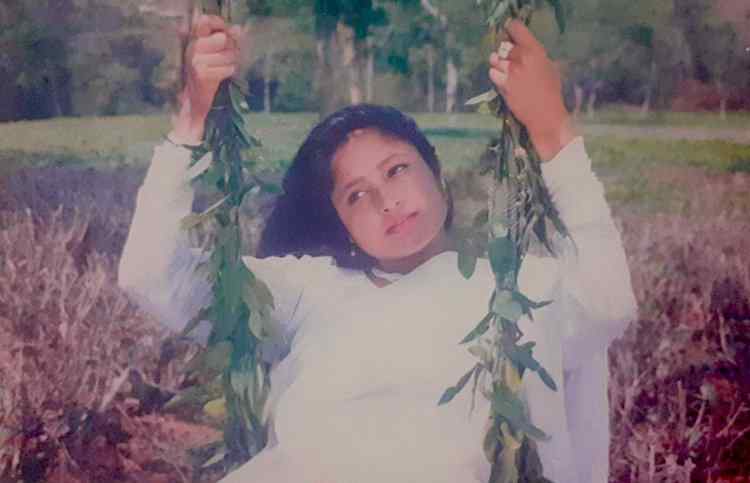
Image: Film still, Morom Nadir Gabharu Ghat
The self-made filmmaker created his own visual style, and his cinematic imaginations, much like his artworks, reflect the socio-cultural, and the political scenario of Assam. During the course of his cinematic journey, he has switched genres, straddling both the world of commercial and art, leaving his own distinctive signature, with films as diverse as the offbeat 'Khoj', the humourous 'Shrimati Mahimamoyee', the action-blockbuster 'Suruj', the musical 'Maram Nadir Gabharu Ghat', and the sweet social drama 'Patnee', which have achieved a cult status among both film fans and critics. Pulok Gogoi's films share great parallels with his works as a fine arts artist, in particular, his sagacious use of lighting, composition and symbols. His painterly eye comes in handy measure in the aesthetics of his movie compositions. He approached both the visual mediums with utmost seriousness. Like his paintings, Pulok Gogoi's movies have touched the pulse of common audiences.
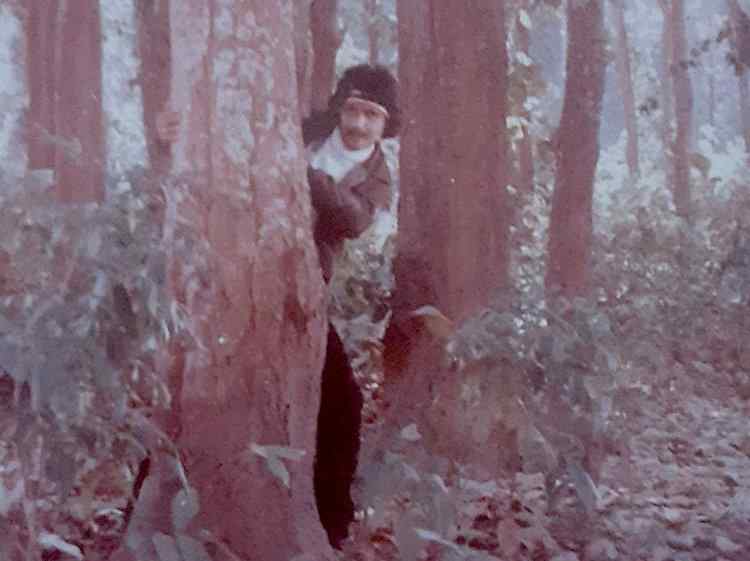
Image: film still, Suraj
Music has always been an important ingredient of Pulok Gogoi's movies. In fact, some of the most memorable hits in Assamese cinema are from his movies. He has launched and groomed a number of well-known artistes like Mehtab Hussain, late Robin Neog, Tapan Das, late Bidyut Chakravarty, Jimoni Choudhury, Brajen Bora, Baharul Islam, Ananya Parashar, late Bikram Hazarika, to name just a few. He has been a great source of inspiration to everyone in the film industry. Many saw him as a hard-working eccentric, but his movies, and even his paintings, are very much a labour of love for him, and that too, when he was grappling with health worries for years.
He has always made a conscious attempt to make films that are different and carry a great deal of substance. A complete livewire, who has worn many hats, the distinguished artist has left an indelible impression on Assam's cultural landscape.
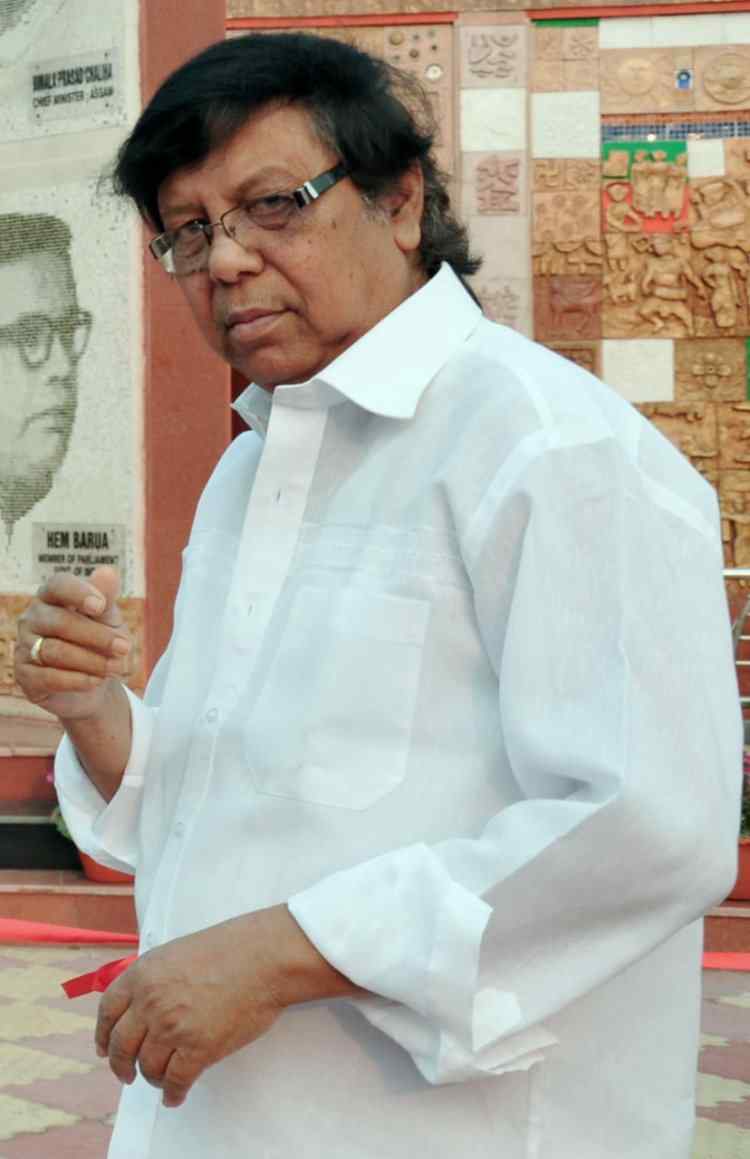
***
About the author: Prantik Deka is a noted film critic based in Assam
What's Your Reaction?









































